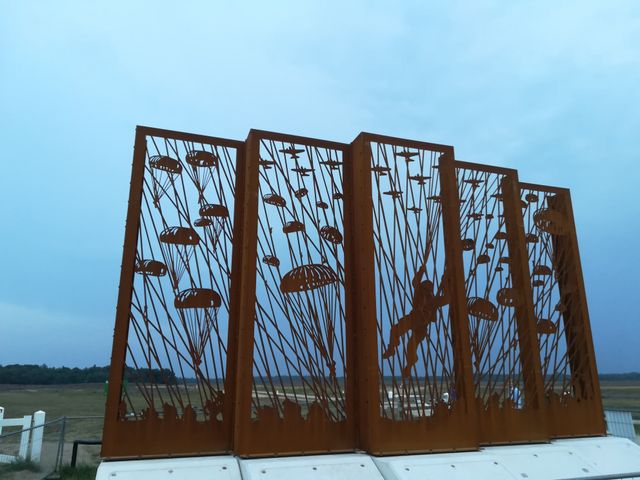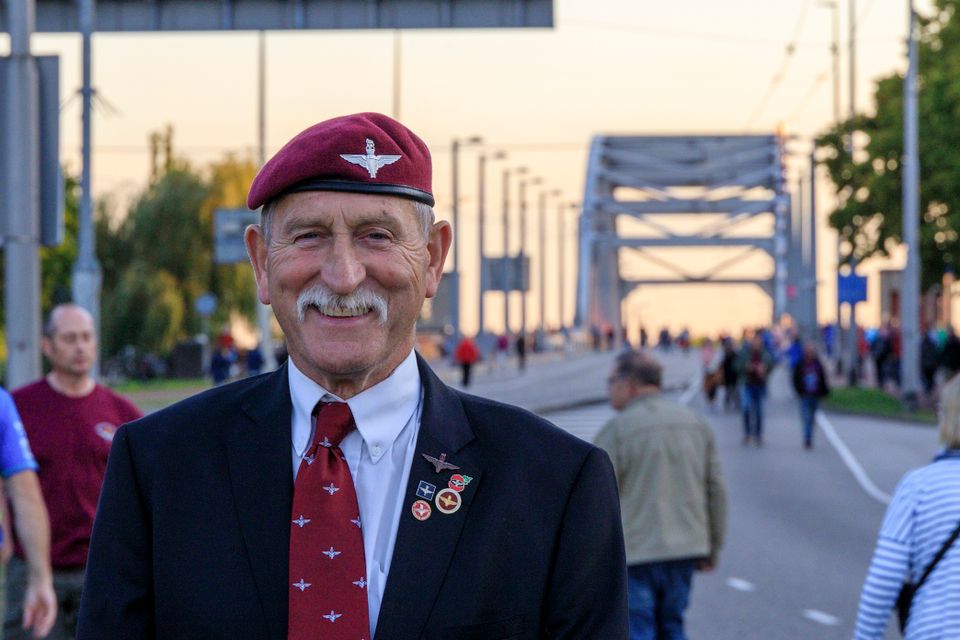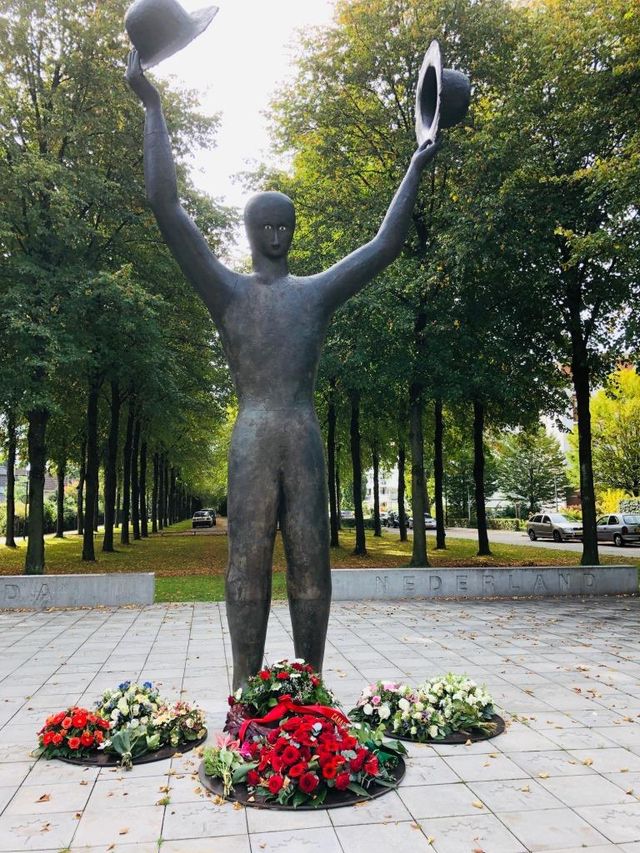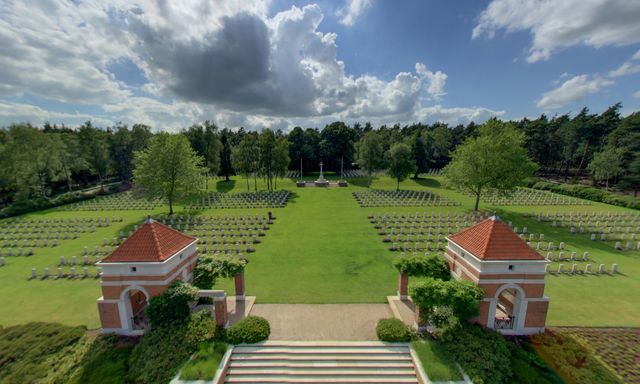2-day Liberation Route
During this two-day tour, you will visit the key locations of Operation Market Garden, Operation Veritable and the Rhineland Offensive. Many places in the east of the Netherlands saw heavy combat during the Second World War. Learn all about the events in one of the many museums and take a minute to reflect on them at a military cemetery or memorial site.
Day 1 - Morning
Morning - Freedom Museum
The Freedom Museum sits in the beautiful hilly landscape of Groesbeek. The museum is located close to the German border and situated right in between Operation Market Garden and Operation Veritable, two of the most important WWII operations on the Western Front. The museum is housed in a unique building—a 12-metre dome that resembles a huge parachute.
In the Freedom Museum's permanent exhibitions, visitors experience the fascinating ‘Story of War’ and ‘Freedom without Borders in the Netherlands, Germany, Europe and beyond’. The exhibitions focus on the Second World War from various angles and perspectives in connection with 20th-century history and current events. Full of experience, interactivity and museum masterpieces, the Freedom Museum challenges visitors to think critically about what freedom means, both then and now.
Canadian War Cemetery Groesbeek
After the museum, visit the military cemetery in Groesbeek. The final resting place of 2619 Commonwealth soldiers, mainly Canadians, who died in World War II. The rows and rows of tombstones are impressive and moving reminders of the events that took place.

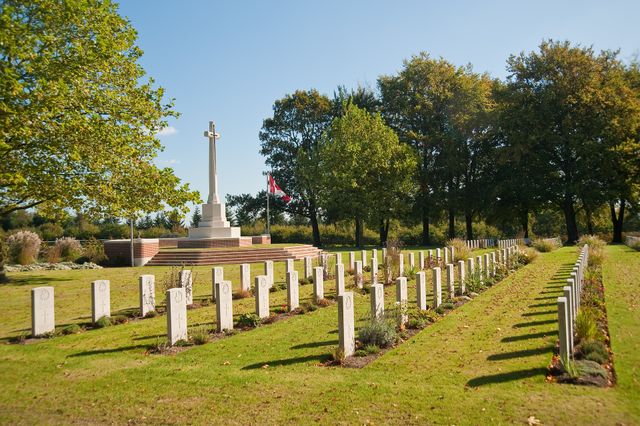
Afternoon
Lunch in Nijmegen
Afternoon - Info Centre WW2
Info Centre WW2 is a historical and tourist information point in Nijmegen, which provides its visitors with information about the Nijmegen area during the Second World War. The video presentation is certainly worthwhile, as it gives a bird’s-eye view of the war years in the Nijmegen region.
Now, it is time to discover Nijmegen. Go on a city walk, for example, or take a leisurely stroll through the city centre to see what the shops have on offer.

Day 2 - Morning
Morning - Airborne at the Bridge
With phenomenal views of the world-famous John Frost Bridge, Airborne at the Bridge tells the personal stories of British Lieutenant John Grayburn, German Hauptsturmführer Viktor Eberhard Gräbner and Dutch Captain Jacob Groenewoud, all who fought and died on this spot during the Battle of Arnhem in September 1944.
Airborne museum at Hartenstein
The permanent exhibition at ‘Hartenstein’ Airborne Museum tells all about the day-to-day goings-on during the Battle of Arnhem—from the air landings on the heath to the evacuation across the Rhine. Highlights are Lieutenant Colonel John Frost's hunting horn and Major General Roy Urquhart's binoculars. In the underground Airborne Experience, visitors walk through the Battle of Arnhem, step by step. Suddenly, you will find yourself in the middle of the fierce battles in the streets of Arnhem in the 1940s. The sounds of a devastating war all around: shots, impacts, shouting in English, orders yelled in German, the fear felt by the people in hiding.
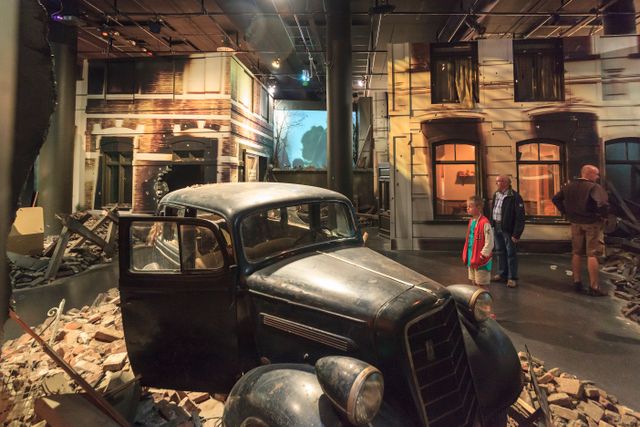
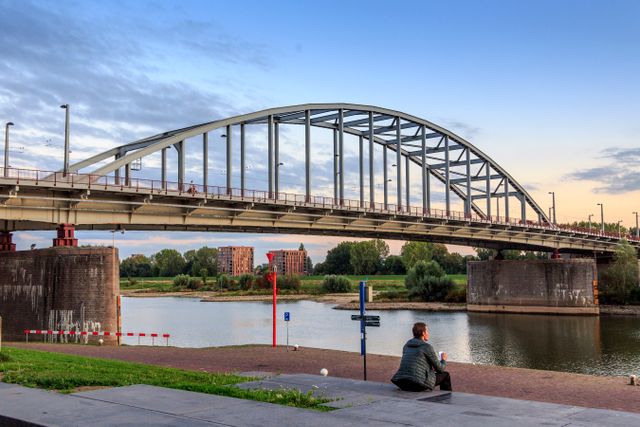
Afternoon
Lunch in Oosterbeek
Afternoon - Hotel de Wereld
On 5 May 1945, the capitulation of the German occupying forces took place in Hotel de Wereld (Hotel the World). Canadian General Foulkes opted for this hotel as negotiating location because it was close to the front, there were no civilians after being evacuated and the metaphorical character of the name ‘De Wereld’ (‘The World'). General Foulkes met with German Colonel General Blaskowitz in what is the current ‘Great Capitulation Hall’ to negotiate the surrender. Prince Bernhard, as Supreme Commander of the Dutch Armed forces, was also present. The Germans were willing to capitulate, and so Hotel De Wereld in Wageningen became a monument of peace and freedom in 1945.
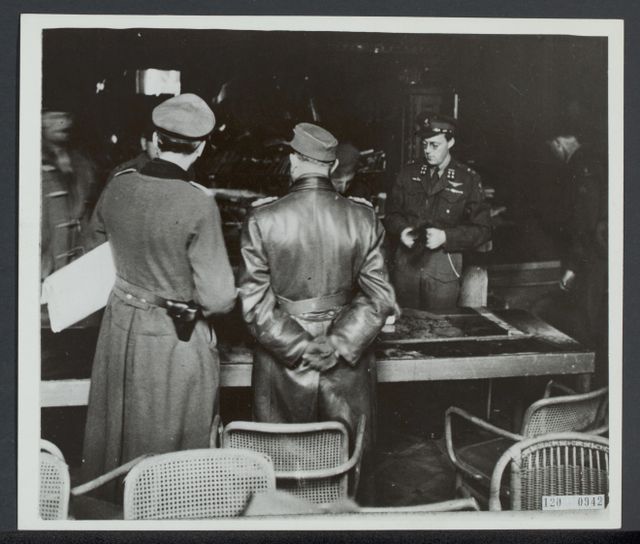
‘Vensters op het Verleden’ (Windows into the Past) memorial in Ede
During the Airborne commemorations in 2019, the landmark 'Windows into the Past’ on the Ginkel Heath was officially unveiled on the very day that 75 years ago the British 4th Parachute Brigade landed on the site to take part in the Battle of Arnhem. The landmark is a work of art that gives an impression of the Airborne landing. At the foot of the landmark are plaques that provide information on the Battle of Arnhem.
